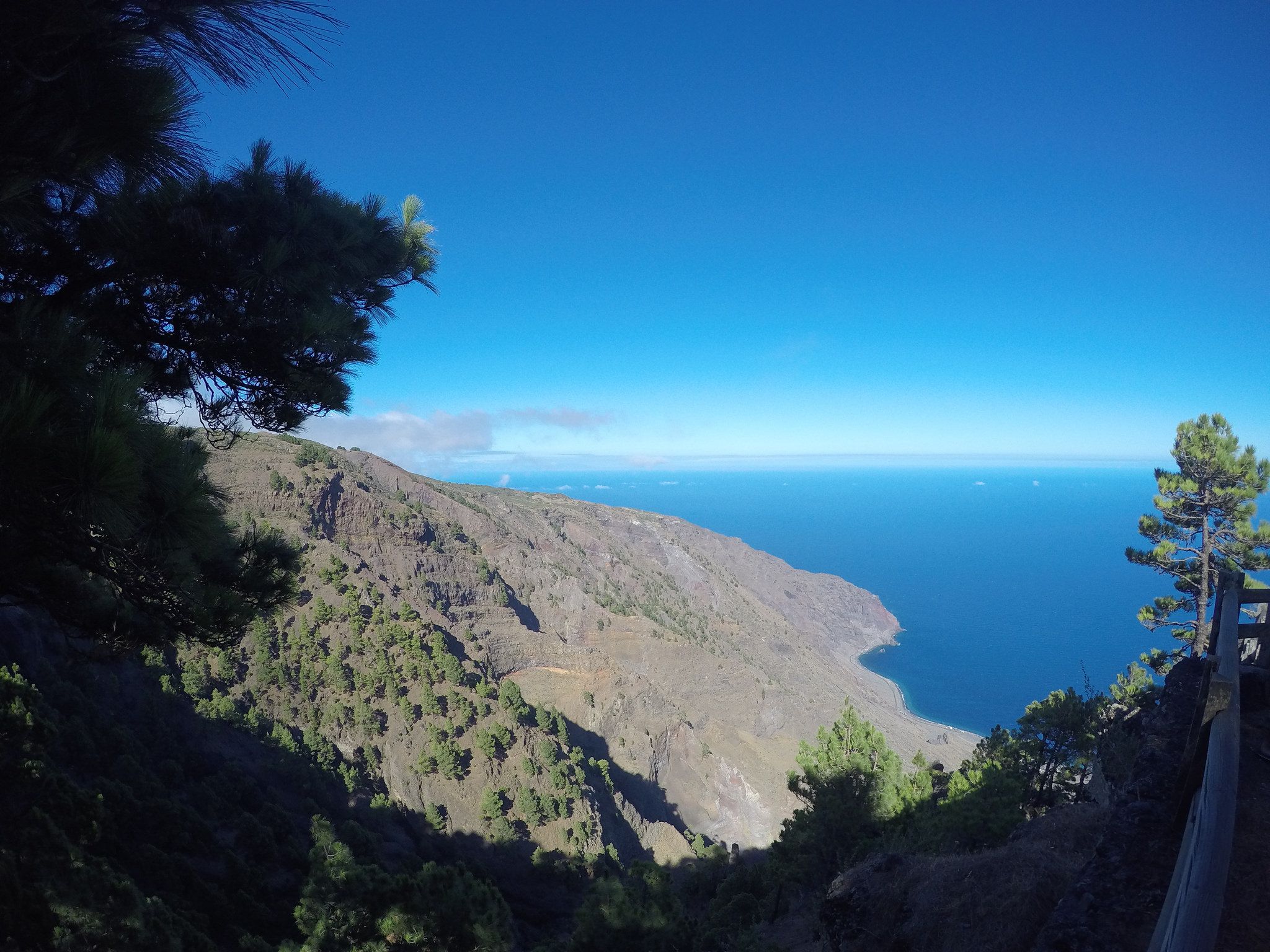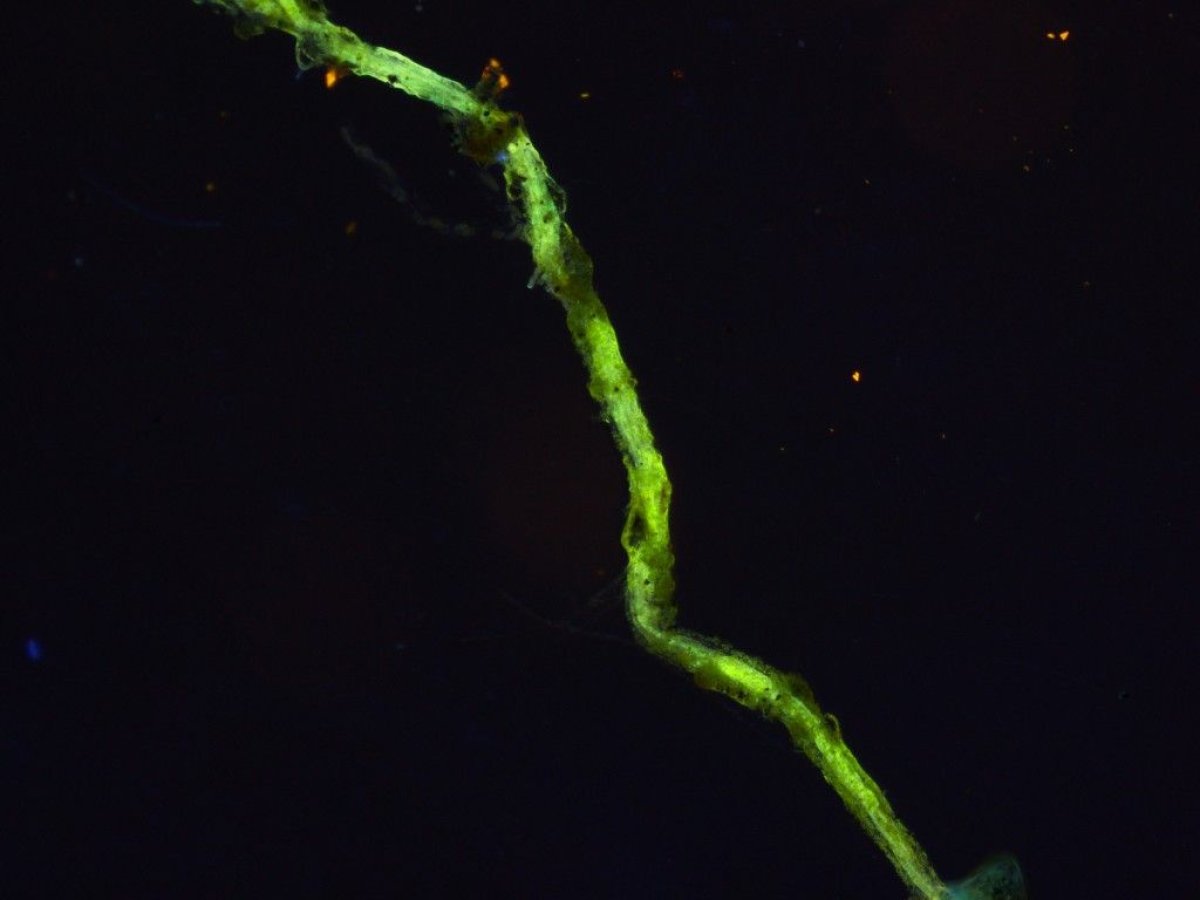
A new species of bacteria has been discovered at the site of a massive underwater volcanic eruption that wiped out all other lifeforms nearby. Scientists discovered that the species, named Thiolava veneris or Venus's hair, had colonized a huge area around the Tagoro volcano off the coast of the Canary Islands, feeding on the sulfur-rich environment and creating the basis of a food web from which a new ecosystem could arise.
The Tagoro volcano erupted between October 2011 and March 2012. It spewed pyroclastic flows—hot ash, lava and toxic gasses—into the water south of El Hierro Island. Previously, scientists found the eruption created a volcanic structure rising from a depth of 400m to 88 meters above sea level, with a base measuring 1.3 kilometers (0.8 miles) in diameter. In total, it reshaped more than nine kilometers squared of the seafloor.
As with large volcanic eruptions on land, Tagoro was catastrophic, killing all lifeforms in the area. There was a sudden increase in water temperature, a drop in oxygen concentrations and a massive release of carbon dioxide and hydrogen sulfide—toxic to most organisms.
In 2014, scientists returned to the site to find out how a new volcanic seafloor is colonized. On arriving at the site, the team, led by Roberto Danovaro of the Polytechnic University of Marche, Italy, discovered an unknown species of bacteria had taken over. They found microbial mats of Venus's hair bacteria extended for kilometers across the seafloor. The white 1 inch-long bacteria was named for its hair-like strands of cells, which are wrapped in a sheath attached to the volcanic rock.
The team used remote operating vehicles to carry out molecular, geochemical and microscopic analysis of the bacteria. Through this, they were able to identify the bacteria, discovering it was a highly unusual new species with special adaptations to survive the extreme environment.
Their findings, published Monday in the journal Nature, showed Venus's hair had an "unprecedented array of metabolic pathways" that allowed it to thrive in a post-volcanic eruption environment. It was able to harness energy by oxidizing sulfide, allowing it to take advantage of the volcanic environment.
"Our findings show that the peculiar metabolic characteristics of the Venus's hair microbial assemblage allowed it to colonize the newly formed seabed resulting from isolated submarine volcanic eruptions," they write.
Because of its ability to thrive in this environment, the Venus's hair paved the way for "early-stage ecosystems" to emerge, driving the development of new biological systems. This, the scientists say, provides an excellent insight into how life can restart after catastrophic events.

In an email interview with Newsweek, Danovaro says they were surprised at the extent to which the bacteria had colonized the seafloor. He said the Venus's hair would have arrived at the site after the eruption and taken advantage of conditions there.
The findings, he says, show how "these extreme systems are rapidly colonized and soon start either primary or secondary production processes that sustain a large plethora of species and higher trophic levels."
Responding to the study, environmental microbiology expert David L Kirchman says the findings could also lead to a better understanding of how and where life emerges. In a related Nature News & Views article, he wrote: "Explorers of new land always have more questions than time and resources for answering them, and that is the case here. One wonders how the barren volcanic rock became covered by a luxurious microbial mat given that the Venus's hair bacterium was not detected in the surrounding seawater and that the Tagoro submarine volcano is far from a likely source of the microorganisms.

"Perhaps [this] work could address even broader questions about where and how a cell first formed to take advantage of geothermal energy like microorganisms now do at the Tagoro volcano. Regardless, the Venus's hair community is a fascinating example of a geological force destroying a habitat while also creating a new one where life returns and flourishes."
Danovaro says the team will now explore the potential biological development of Venus's hair as it "appears to be made of a very robust material, whose properties deserve further investigations." This, he says, will include culturing the microbes and testing their properties. "In addition, we want to follow the evolution of this system over time and discover their distribution on a global scale, as well as their presence in other systems."
Uncommon Knowledge
Newsweek is committed to challenging conventional wisdom and finding connections in the search for common ground.
Newsweek is committed to challenging conventional wisdom and finding connections in the search for common ground.
About the writer
Hannah Osborne is Nesweek's Science Editor, based in London, UK. Hannah joined Newsweek in 2017 from IBTimes UK. She is ... Read more
To read how Newsweek uses AI as a newsroom tool, Click here.








